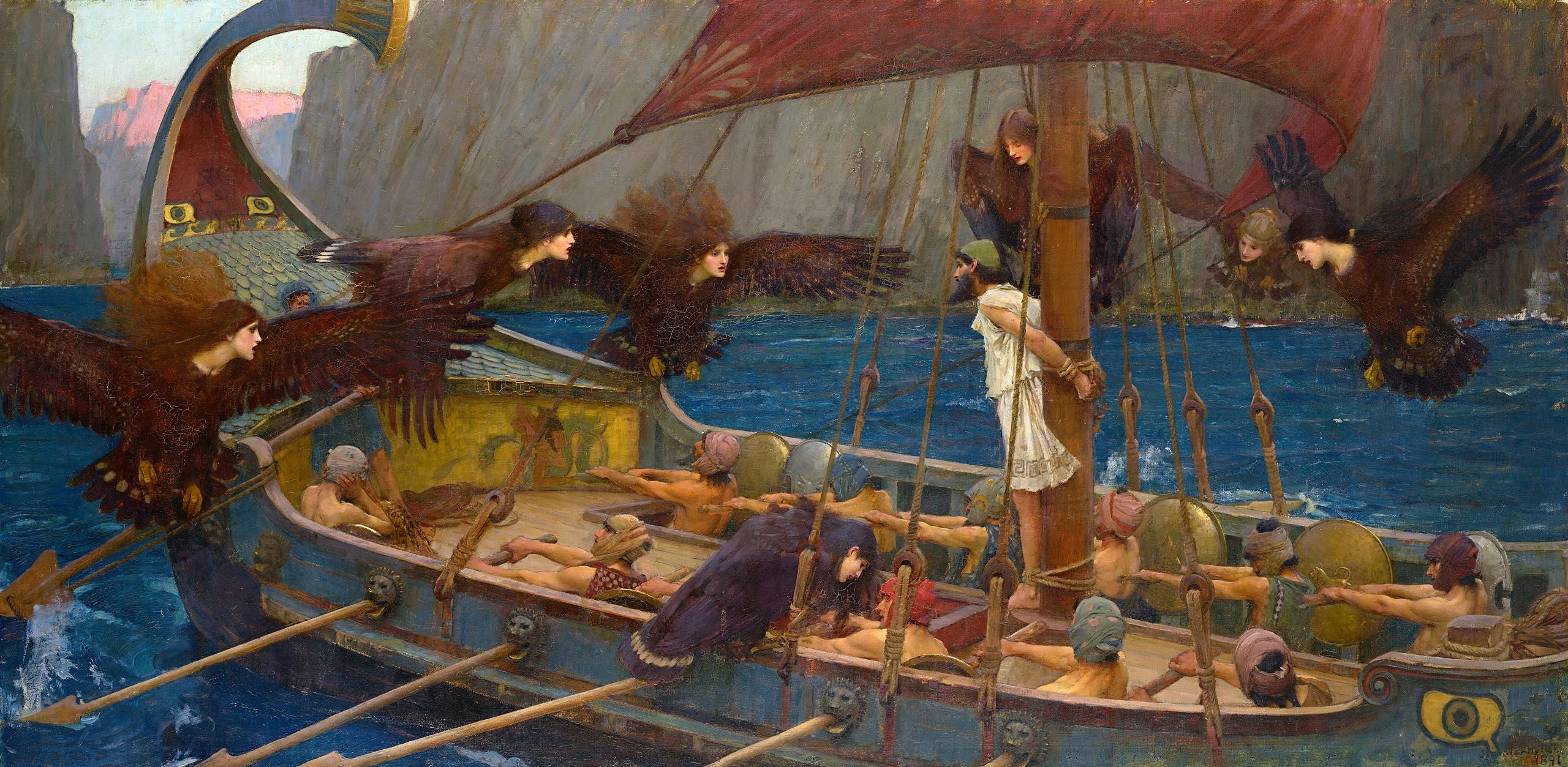Description
Ulysses and the Sirens is an iconic painting by the British artist John William Waterhouse, who created a series of works inspired by mythology and classical literature throughout his career. This particular painting was done in 1891 and shows Odysseus, the hero of Homer's Greek epic "The Odyssey," tied to the mast of his ship while the Sirens try to seduce him with their song.
An interesting feature of this work is how Waterhouse manages to combine realist elements with a romantic and symbolist approach. His style is characterized by attention to detail, the beauty of his representations of women and the meticulously crafted settings. Although the painting is based on an ancient story, Waterhouse interprets it in a fresh and captivating way, capturing the tension between Odysseus's fascination with the sirens' song and his determination to resist their charms.
While Ulysses and the Sirens is an iconic and widely known work by John William Waterhouse, there are some lesser-known aspects of the painting that may be of interest.
Its pre-Raphaelite influence. Waterhouse was part of the pre-Raphaelite movement, which sought to return to a more detailed and naturalistic aesthetic in painting, similar to that of artists before Raphael. This is reflected in his meticulous depiction of nature and detail in Ulysses and the Sirens, as well as his choice of colors and attention to symbolism.
The choice of the mermaids. In Greek mythology, sirens were half-woman, half-bird creatures who seduced sailors with their song to lead them to their doom. Waterhouse chose to depict the sirens as beautiful, sensual women, which adds an erotic dimension to the painting and emphasizes Ulysses' internal struggle between his desire and his reason.
Subjective interpretation. Although the scene of Ulysses tied to the mast is a classic depiction of the story, Waterhouse gives it his own personal interpretation. The expression on Ulysses' face suggests his anguish and internal conflict as he listens to the sirens' song, which adds an emotional layer to the painting.
Symbolism of the sea and navigation. The sea in Ulysses and the Sirens is a central element of the work, and its representation is detailed and beautiful. The sea can symbolize both the source of danger and the attraction of the unknown, reinforcing the theme of temptation and danger in the story of Ulysses.
Overall, Ulysses and the Sirens is a work that goes beyond the mere representation of a mythological episode and offers a unique look at the psychology of Ulysses and the tension between reason and desire. Waterhouse's mastery of detailed painting and his ability to convey emotion make this work remain a notable piece of art history.
Ulysses and the Sirens is a work that has captured the imagination of many people over the years and remains one of Waterhouse's most iconic paintings. His focus on classical mythology and his ability to convey narratives through painting make him a leading artist in the Victorian and pre-Raphaelite art movement.







